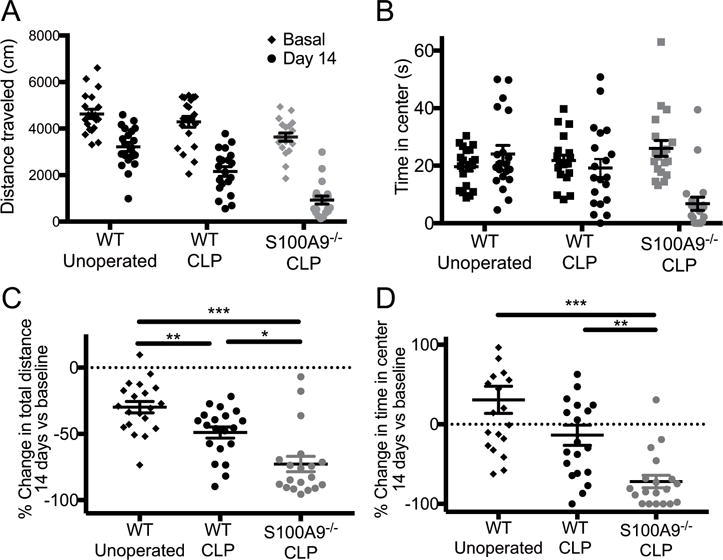Fig. 8.

S100A9 knockout increases anxiety-like behavior after CLP. Basal and 14-day repeated open field tests show decreased total distance traveled in wild-type unoperated mice (N = 10 male, 10 female), wild type mice before and after CLP (N = 10 male, 10 female), and S100A9−/− mice before and after CLP (N = 7 male, 12 female) (A, 2-way ANOVA, effect of group p < 0.001, effect of time p < 0.001, interaction p = 0.0013). Time in the center of the open field was significantly decreased only in S100A9−/− mice after CLP (B, 2-way ANOVA, effect of time p = 0.0015 and time/group interaction p < 0.001). In order to isolate the effect of CLP from the effect of repeated measures and baseline effect of genotype, we calculated the relative change in both distance and time measures for each individual mouse over the experiment. Wild-type CLP mice demonstrated a greater decrease in total distance moved than did unoperated mice (p < 0.01) and S100A9−/− mice demonstrated a greater effect of CLP than did wild-type controls (p = 0.0026) (C). The change in time in center of the arena did not differ significantly among wild-type unoperated controls and sepsis survivors (p = 0.052) but S100A9−/− sepsis survivors spent significantly less time in the center after CLP compared to wild-type sepsis survivors (D, p < 0.008). *** p < 0.001, ** p < 0.01, * p < 0.05
